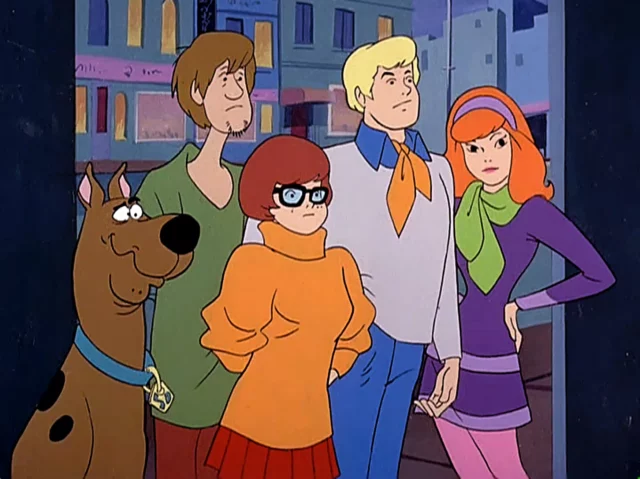Most millennial kids, with some Gen Z as well, cherish nostalgic memories about a well-watched cartoon- Scooby Doo. But recent news has gotten them more excited as Velma, one of the focal characters in the animation series, has been portrayed as a lesbian in the new Scooby-Doo movie.
This marks a great stride forward when it comes to showing LGBTQ+ cartoon characters on screen and explicitly celebrating their sexuality.

Scooby Doo first appeared as a Saturday cartoon in 1969, narrating the story of a group of teenage sleuths who go on bone-chilling adventures and solve mind-boggling mysteries.
Daphne Blake was shown as the typical attractive female character, with her long red hair and make-up. Velma Dinkley derails from the heteronormative look from the very start with her bob cut and nerdy glasses, signifying something different from the usual femme fatale.
Velma’s Angle In New Movie
The new movie, ‘Trick or Treat Scooby Doo!’, has garnered a load of anticipation as suggestive video clips have been shared by fans like wildfire.
One scene shows Velma heading to feed the Great Dane his Scooby snacks when she becomes dumbstruck on seeing love at first sight. Her dialogue trails off mid-sentence when she sees Coco Diablo, a fashion designer crime boss.

Clearly captivated by her looks, Velma quickly analyzes her with her razor-sharp deductive ability, while her cheeks flush with a rosy red and her glasses fog up in perspiration. Shortly, Velma displays all the signs of infatuation when she sighs, “Jinkiiiees..”

Another scene of the movie shows Velma openly declaring that Diablo is not her type. But immediately after she goes to Daphne and confesses her obsession with the crime boss. “I’m crushing big time, Daphne. What do I do? What do I say?”, she says.
Velma is shown in her usual brunette bob and bangs, and the iconic orange turtleneck and red pleated skirt, with no attempt to drastically change her character. This shows that no flashy changes to Velma’s history were necessary to portray her lesbian side.
Read More: Watch: Pride Month’19 – India’s Top LGBTQ Friendly Places
Coming Out Finally
Although previous creators of Scooby Doo movies have tried to show the lesbian side of Velma’s character, the studios have not allowed it till recently.
James Gunn, who wrote two live-action Scooby Doo movies, had tweeted that he had intended for Velma to be “explicitly gay in my initial script”, which he wrote in 2001. But Warner Bros., which owns the franchise, “just kept watering it down & watering it down”, he said.

Also in 2020, Tony Cervone, a supervising producer of the 2010-2013 animated series, ‘Scooby-Doo: Mystery Incorporated’, shared an image of Velma and Marcie posing in front of the pride flag.
But this time Velma has come out more confidently. Audie Harrison, director of the new movie, stated that Warner Bros. supported “this direction for Velma’s character from day one.”

Harrison claimed that while they were working on the movie, she did not realize the ground-breaking nature of their project. She said, “I just set out to have fun with the comedy of an awkward teenage crush.”
The past decade has witnessed the appearance of more queer characters in animated shows, like Cartoon Network’s ‘Steven Universe’ and Netflix’s ‘She-Ra and the Princesses of Power’.
Disclaimer: This article is fact-checked
Sources: The Washington Post, Variety, The Indian Express
Image sources: Google Images
Feature Image designed by Saudamini Seth
Find The Blogger: shoomedha
This post is tagged under: velma lesbian scooby doo, how velma comes out as a lesbian in new scooby doo movie, velma finally comes out as queer, new scooby doo movie, trick or treat scooby doo, lgbtq+ representation in cartoons, gay cartoon characters, queer characters, velma is a lesbian, celebration of sexuality in cartoons, lgbtq+ pride, lesbian pride, queer pride
Disclaimer: We do not hold any right, copyright over any of the images used, these have been taken from Google. In case of credits or removal, the owner may kindly mail us.
Other Recommendations:
The Indian LGBTQ+ Movement Needs Its Own Local Roots, Not Western





























